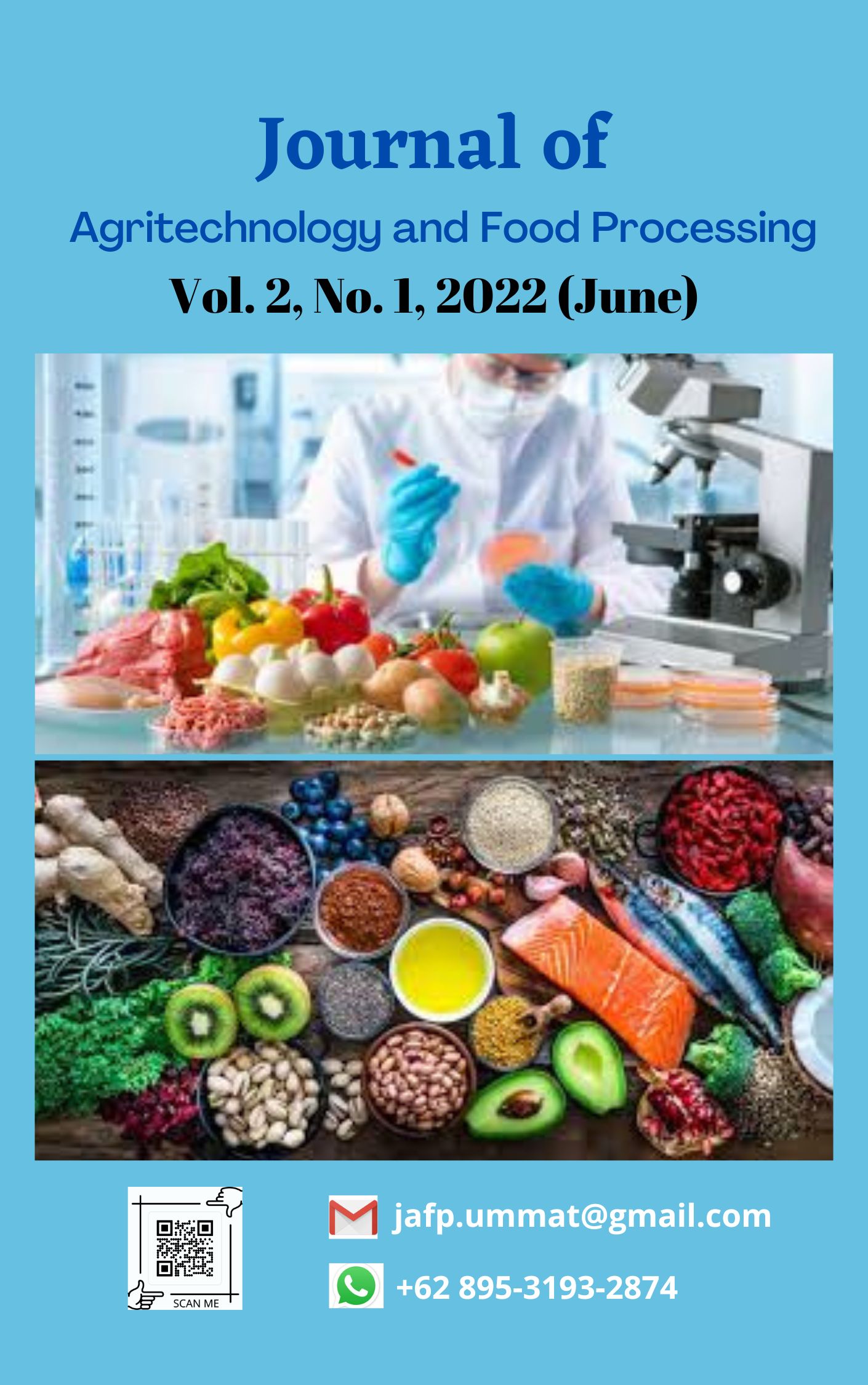Studi awal uji aktivitas enzim amilase dari tumbuhan secara kualitatif berdasarkan perbedaan suhu dan konsentrasi substrat
DOI:
https://doi.org/10.31764/jafp.v2i1.9338Keywords:
amylase, Benedict reagent, starch, substrate, temperatureAbstract
Amylase enzyme is a starch hydrolyzing enzyme that has wide applications in the food, beverage and biotechnology industries. One source of the amylase enzyme that is easily obtained is plant seeds and sprouts. This research is a preliminary study to qualitatively test the activity of the crude extract of the amylase enzyme from plants. Amylase enzyme was obtained from green bean sprouts, fresh and dried peanut seeds, and fresh and dried corn seeds. The crude extract of the amylase enzyme was tested for its activity using 1% starch as a substrate with variations in temperature and amount of substrate. The result of starch hydrolysis in the form of reducing sugar was detected using Benedict's reagent. The experimental results showed that the amylase enzyme extracted from green bean sprouts and fresh and dried corn kernels showed activity in breaking down starch at 25oC using 6 mL substrate concentration, while dried peanut seeds showed no activity. The enzyme activity is influenced by temperature and the amount of substrate.
References
Ariandi. 2016. Pengenalan enzim amilase (alpha-amylase) dan reaksi enzimatisnya menghidrolisis amilosa pati menjadi glukosa. Jurnal Dinamika, 7(1): 74-82.
Bahri, S., Mirzan, M., & Hasan, M. (2012). Karakterisasi Enzim Amilase Dari Kecambah Biji
Jagung Ketan (Zea mays ceratina L.), Jurnal Natural Science, 1(1):132-143.
Damira., Firda, N., Farma, S.A., Atifah, Y., Batungale, S. 2021. Aktivitas enzim amilase pada saliva dan enzim protease pada secret pancreas Rana esculenta. Prosiding SEMNAS BIO UNP 2021 vol 01: 111-121.
Fatimah, S., Surur, M. A., A’tourrohman, M., Rohmah, A., dan Khumaera, F. (2019). Analisis
Enzim Pencernaan menggunakan Variasi Uji. Fisiologi Hewan :1-8.
Kusumaningrum A, Gunam IBW, dan Wijaya IMM, 2019. Optimasi Suhu dan pH Terhadap Aktivitas Enzim Endoglukanase Menggunakan Response Surface Methodology (RSM). Jurnal Rekayasa dan Menejemen Agroindustri Vol 7 (2): 243-253.
Isti’anah., Utami, U., Barizi, A. 2020. Karakterisasi enzim amilase dari bakteri Bacillus megaterium pada variasi suhu, pH, dan konsentrasi substrat. Jurnal riset biologi dan aplikasinya, 2(1): 11-17.
Risnoyatiningsih, Sri, (2011). Hidrolisis Pati Ubi Jalar Kuning Menjadi Glukosa Secara Enzimatis. Jurnal Teknik Kimia Vol. 5, No. 2. Program Studi Teknik Kimia Fakultas Teknologi Industri UPN “Veteranâ€, Surabaya.
Salwanee, S., Wanaida, W. M., Mamot, S., Maskat, M. Y., & Ibrahim, S. (2013). Effects of
Enzyme Concentration, Temperature, pH and Time on the Degree of Hydrolysis of
Protein Extract from Viscera of Tuna. Sains Malaysian, 42(3):279-287.
Soeka, Y. S. (2016). Karakterisasi Bakteri Penghasil α-amilase dan Identifikasi Isolat C2 yang
Diisolasi dari Terasi Curah Samarinda, Kalimantan Timur. Berita Biologi, 15(2):185-
Souza, P. M. & Magalhaes, P. O. (2010). Application of Microbial α-Amylase in Industry – A
Review. Brazilian Journal of Microbiology, 41:850-861.
Suarni dan Patong, R., 2007, Potensi Kecambah Kacang Hijau Sebagai Sumber Enzim αAmilase, Universitas Hasanudin, Makasar
Thomy, Z. & Harnelly, E. (2018). Buku Ajar Dasar-Dasar Biologi Sel dan Molekule : Buku
Untuk Mahasiswa. Banda Aceh: Syiah Kuala University Press.
Wahjuni, S., Suarya, P., Saputra, M. A. 2017. Isolasi enzim amilase dari kecambah biji jagung local seraya (Zea mays L) untuk hidrolisis pati. Jurnal Kimia FMIPA Univ Udayana, 11(2): 107-193.
Downloads
Published
Issue
Section
License
Authors who publish with this journal agree to the following terms:
1. Authors retain copyright and grant the journal right of first publication with the work simultaneously licensed under a Creative Commons Attribution License that allows others to share the work with an acknowledgement of the work's authorship and initial publication in this journal.
2. Authors are able to enter into separate, additional contractual arrangements for the non-exclusive distribution of the journal's published version of the work (e.g., post it to an institutional repository or publish it in a book), with an acknowledgement of its initial publication in this journal.
3. Authors are permitted and encouraged to post their work online (e.g., in institutional repositories or on their website) prior to and during the submission process, as it can lead to productive exchanges, as well as earlier and greater citation of published work (See The Effect of Open Access).

